The Earth is an amazing planet. It has an endless variety of life forms, both relatively recent and very ancient. Here is a list of the oldest living beings on Earth that will definitely make you feel young.
10. Martialis heureka
Age: 100-120 million years old
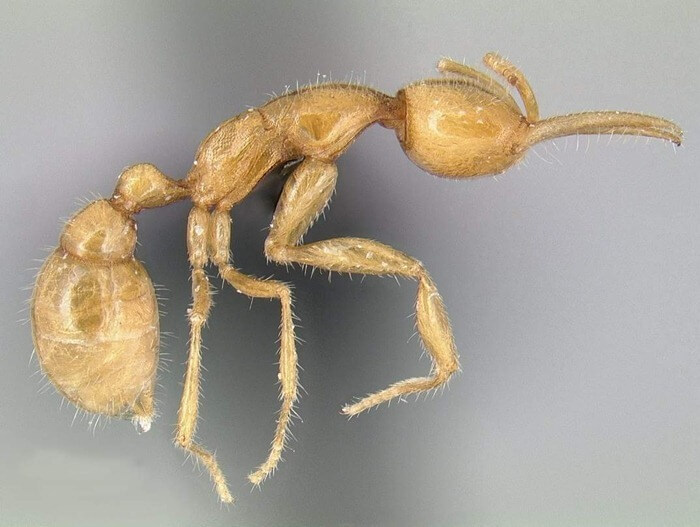 This rare Amazonian animal has been dubbed the Ant from Mars because it looks and behaves completely differently than any other ant species. This is one of the oldest animals on Earth according to various estimates, it appeared from 100 to 120 million years ago.
This rare Amazonian animal has been dubbed the Ant from Mars because it looks and behaves completely differently than any other ant species. This is one of the oldest animals on Earth according to various estimates, it appeared from 100 to 120 million years ago.
Martialis heureka live in soil and do not have eyes, but nature has endowed them with numerous hair-like protrusions on the body. They help these strange ants sense vibration and pressure changes in the surrounding soil.
9. Frilled shark
Age: 150 million years
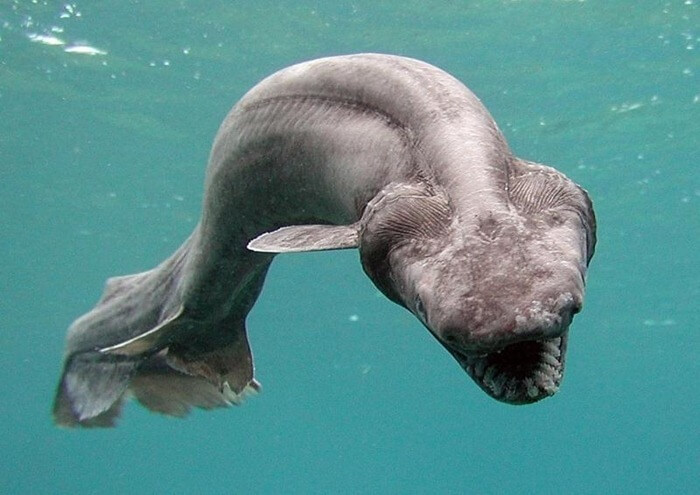 One of the oldest living representatives of the shark family. In 2007, a frilled shark was caught near Tokyo, which is very strange, because usually these predators live at a depth of 600-1000 meters. Scientists assumed that the female was sick, and therefore ascended to the surface. The caught shark, despite careful care, lived for only 2 days.
One of the oldest living representatives of the shark family. In 2007, a frilled shark was caught near Tokyo, which is very strange, because usually these predators live at a depth of 600-1000 meters. Scientists assumed that the female was sick, and therefore ascended to the surface. The caught shark, despite careful care, lived for only 2 days.
Special chemical and physiological adaptations allow the frilled shark, more like a snake or an eel, to survive at depths, where there is no access not only to humans, but also to many marine inhabitants.
8. Shields
Age - 200 million years
 Perhaps one of the distant great-great-great (and many, many "great-great") - the great-grandfathers of these freshwater crustaceans saw a living dinosaur with his own eyes. Or the only continent at that time - Pangea.
Perhaps one of the distant great-great-great (and many, many "great-great") - the great-grandfathers of these freshwater crustaceans saw a living dinosaur with his own eyes. Or the only continent at that time - Pangea.
The shield is a very small animal with a length of 2 to 4 millimeters that can survive even in the harshest geological conditions. Shield eggs can remain dormant for several years until conditions are right for hatching. And even the cannibalism inherent in shtitny could not destroy this species.
7. Sturgeon
Age - 200 million years
 These are the largest freshwater fish found in North America and Eurasia and are one of the oldest species in the bony fish class.
These are the largest freshwater fish found in North America and Eurasia and are one of the oldest species in the bony fish class.
However, due to the extraction of expensive black caviar, which has an exquisite taste, sturgeon fish are under threat of destruction. Over 15 years, the sturgeon population in the Caspian Sea alone has decreased 38.5 times
6. Latimeria
Age - 360-400 million years
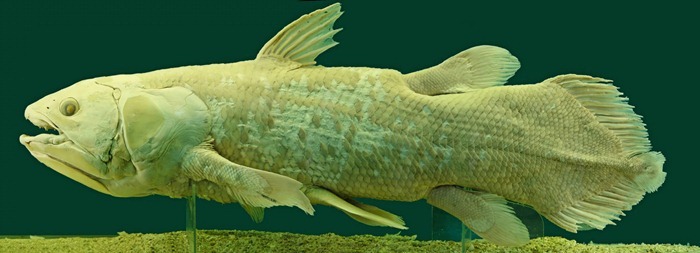 This ancient fish is one of the rarest and most endangered fish in the world. For a very long time it was believed that the coelacanth was an extinct species, but in recent years these fish have been discovered in the Indian Ocean.
This ancient fish is one of the rarest and most endangered fish in the world. For a very long time it was believed that the coelacanth was an extinct species, but in recent years these fish have been discovered in the Indian Ocean.
Giant coelacanths grow up to 190 cm in length and live at a depth of about 100 meters. They have electrosensory organs that help detect the presence of prey, and the lobe fin structure is unique and not found in any modern fish.
5. Horseshoe crab
Age - 230-450 million years
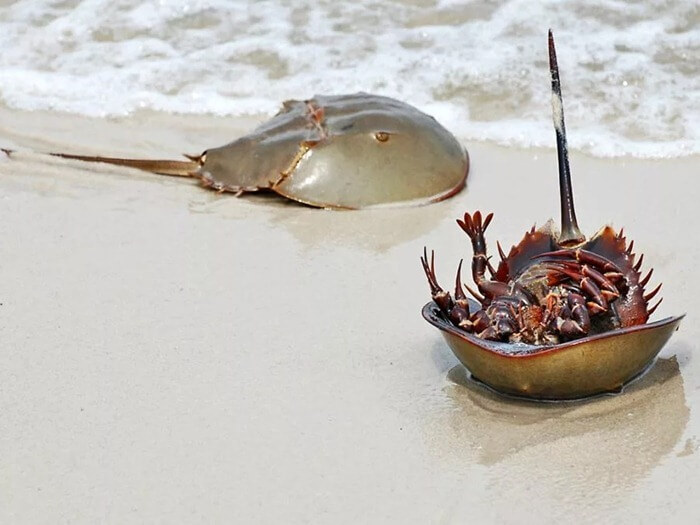 This strange crab, upside down more like the face-hunter from "Aliens", was a contemporary of the most ancient dinosaurs.Despite its name, "horseshoe crab" (aka horseshoe crab) does not refer to crabs, but to arachnids. Trilobites were his closest relatives.
This strange crab, upside down more like the face-hunter from "Aliens", was a contemporary of the most ancient dinosaurs.Despite its name, "horseshoe crab" (aka horseshoe crab) does not refer to crabs, but to arachnids. Trilobites were his closest relatives.
The body of a horseshoe crab reaches 60 cm in length and consists of two sections: the cephalothorax and abdomen. Both parts from the back are protected by a powerful carapace, greenish-gray. Excellent disguise against the silt background. And on the tail needle there are thorny projections that help the horseshoe crab to balance in the water in a strong current. The tail is also needed for "plowing" the seabed in search of food and as a lever if the horseshoe crabs suddenly roll over. Alas, it does not always work.
This amazing creature swims amusingly - belly up, using its own shell as a boat.
4. Nautilus
Age - 235-500 million years
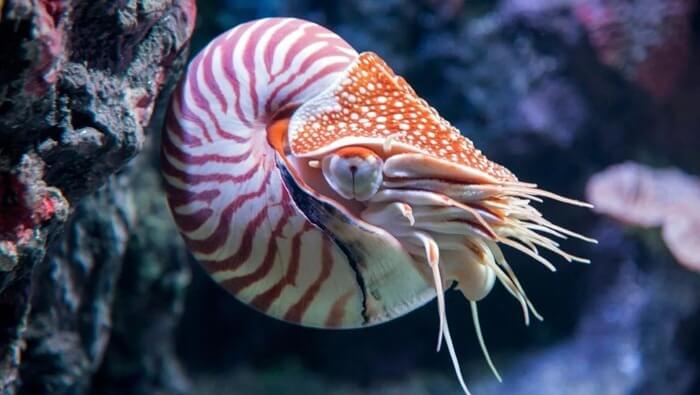 One of the last representatives of a very old group of molluscs. According to various estimates, this cephalopod mollusk appeared on Earth from 500 to 235 million years ago and is older than many types of dinosaurs. Thus, nautilus is rightfully called a living fossil.
One of the last representatives of a very old group of molluscs. According to various estimates, this cephalopod mollusk appeared on Earth from 500 to 235 million years ago and is older than many types of dinosaurs. Thus, nautilus is rightfully called a living fossil.
Its beautiful spiral shell, perhaps, could arouse the envy of modern cephalopods, deprived of such a luxurious refuge. Fortunately, this feeling is unfamiliar to them.
About 90 small tentacles arranged in a crown around the mouth help the nautilus catch prey and repel enemy attacks.
3. Medusa
Age - 505-550 million years
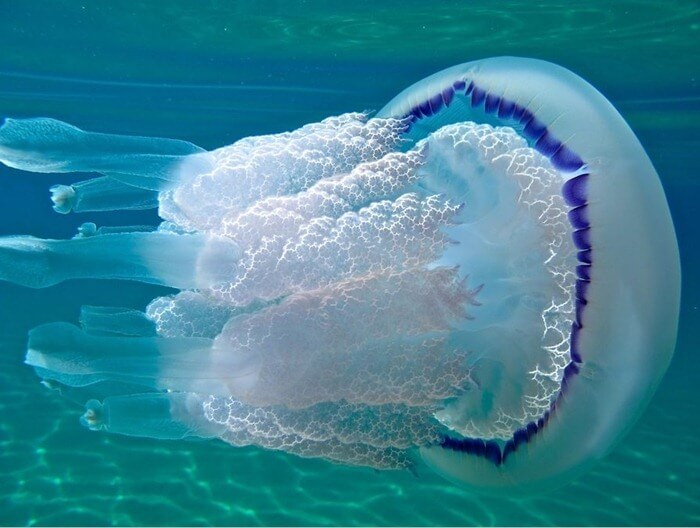 It is the most primitive aquatic animal (after the second number of the most ancient animals on Earth). A jellyfish never has a headache, because it has neither a brain nor a nervous system, but it has primitive digestive and sensory organs.
It is the most primitive aquatic animal (after the second number of the most ancient animals on Earth). A jellyfish never has a headache, because it has neither a brain nor a nervous system, but it has primitive digestive and sensory organs.
90% of the jellyfish's body is made up of water, giving it a transparent, jelly-like appearance. But do not delude yourself with her seeming harmlessness. Many types of jellyfish are poisonous. And the most dangerous of them is the box jellyfish. Its venom can kill an adult and many large animals almost as quickly as the most venomous snake in the world... Moreover, the victim dies within 2 to 15 minutes from severe pain shock or cardiac arrest. The box jellyfish is also known as one of the most transparent animals on planet Earth.
2. Sponges
Age - 580 million years
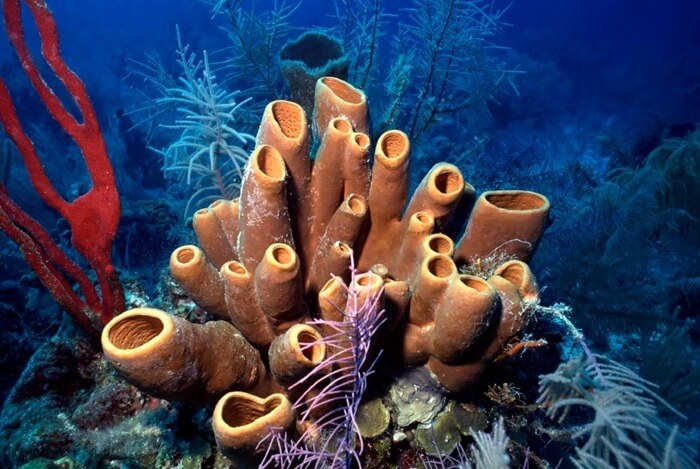 Who lives at the bottom of the ocean? These are sponges - one of the most primitive animals that look like plants.
Who lives at the bottom of the ocean? These are sponges - one of the most primitive animals that look like plants.
They are nothing more than cell aggregation and have no internal organs or body parts. Sponges live in sea and fresh water. One of the most famous types of sponges are corals. There are about 8 thousand types of sponges in the world. So sponge Bob - the character of the famous cartoon - has a huge number of living relatives, with a very ancient pedigree.
1. Cyanobacteria
Age: 3.5 billion years
 You have never seen this tiny bacterium, but it is she who leads the top 10 living organisms for the longest time on Earth. And it is she who is one of the reasons why life on our planet has become possible. Cyanobacteria or blue-green algae is probably the first living organism to appear on Earth. It is a photosynthetic microorganism that lives in large colonies and releases oxygen as a byproduct of photosynthesis. Thanks to their activities, according to scientists, the "oxygen catastrophe" began - a change in the composition of the earth's atmosphere. This process began about 2.4 billion years ago and caused the restructuring of the biosphere and the global Huronian glaciation.
You have never seen this tiny bacterium, but it is she who leads the top 10 living organisms for the longest time on Earth. And it is she who is one of the reasons why life on our planet has become possible. Cyanobacteria or blue-green algae is probably the first living organism to appear on Earth. It is a photosynthetic microorganism that lives in large colonies and releases oxygen as a byproduct of photosynthesis. Thanks to their activities, according to scientists, the "oxygen catastrophe" began - a change in the composition of the earth's atmosphere. This process began about 2.4 billion years ago and caused the restructuring of the biosphere and the global Huronian glaciation.
Today cyanobacteria are one of the main sources of oxygen in the world. And thus support the existence of all other oxygen-respiratory life forms.
The oldest animals in the world, which are still preserved, while most of their analogues have become extinct long ago, are called living fossils. Studying these animals provides scientists with more information on evolution and successful survival strategies used in the animal kingdom.

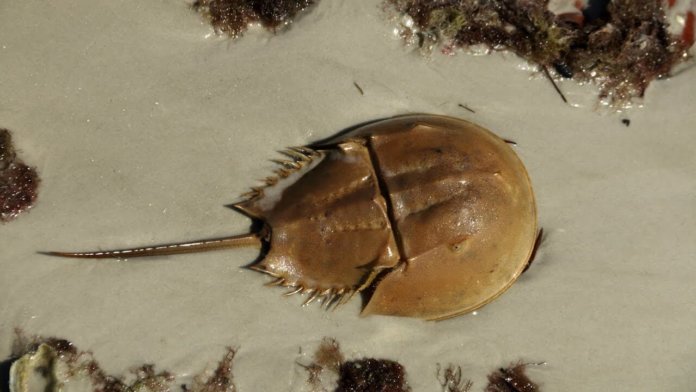
So many eras have changed ..
but the faithful in the holy evolution have not gone anywhere.